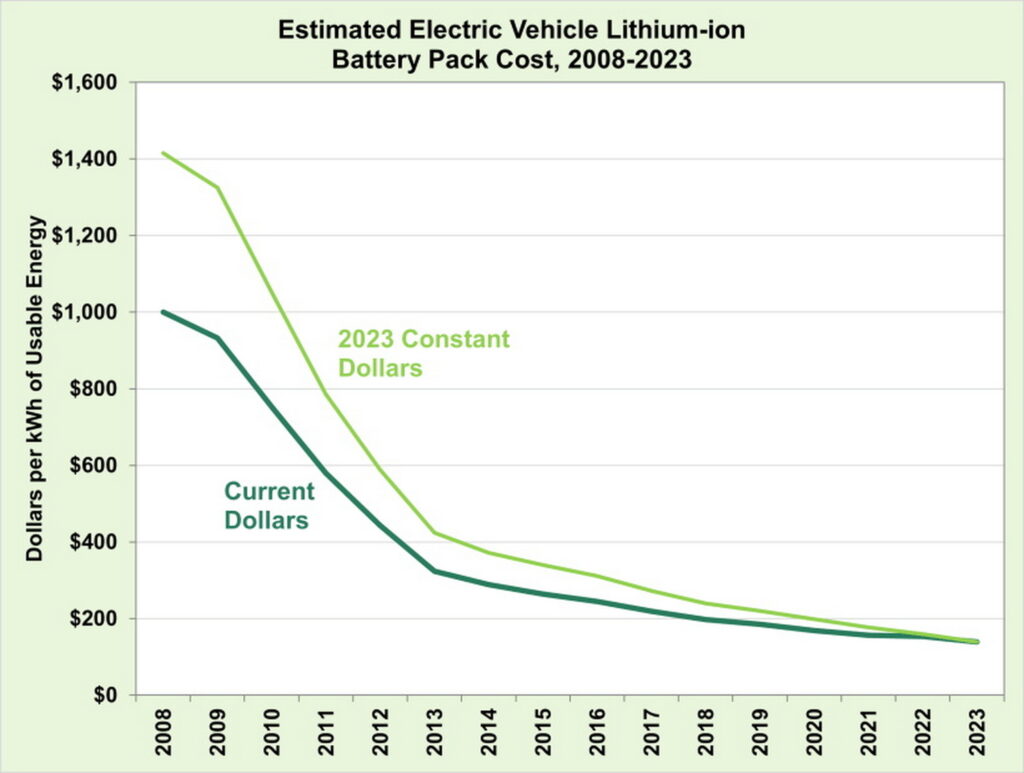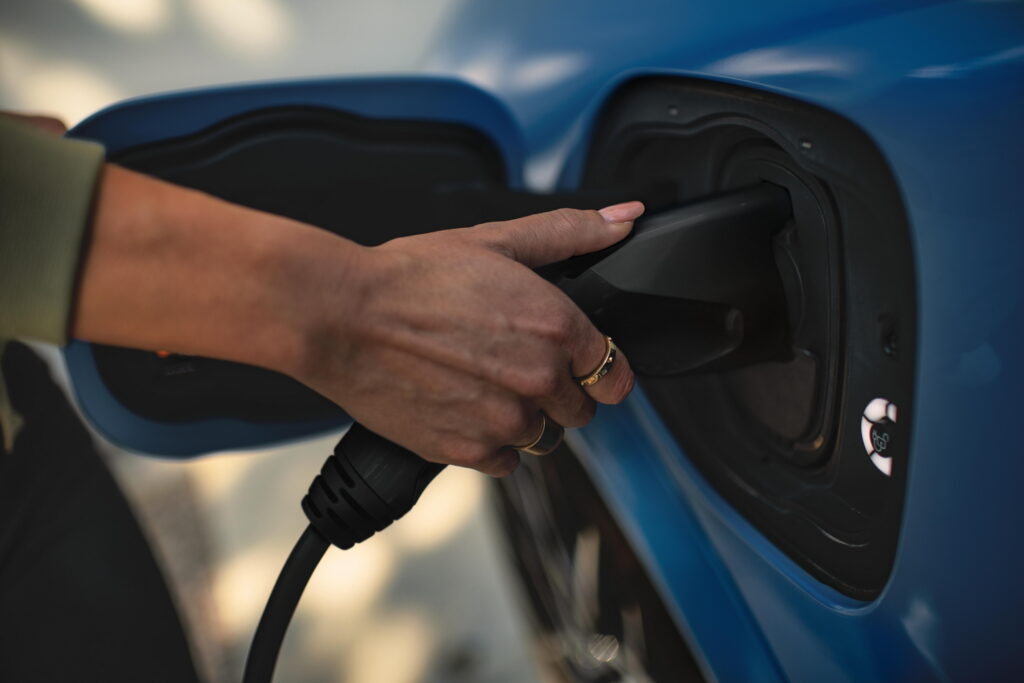- The Department of Energy’s Vehicle Technologies Office published cost estimates for EV batteries.
- The cost of a battery pack has dropped from $1,415/kWh in 2008, to $139/kWh in 2023.
- Lower production costs for EVs will allow automakers to achieve price parity with ICE.
Electric cars are not the novelty that they used to be, but they are certainly cheaper to make compared to 15 years ago. A new study by the Department of Energy’s (DOE’s) Vehicle Technologies Office suggests that the cost of electric vehicle batteries has declined by a whopping 90 percent between 2008 and 2023, making it easier for automakers to close the price gap between ICE and EV.
One of the most important factors in EV production is the size, weight, and cost of the battery pack. Thankfully, the latter has been constantly dropping over the past decades thanks to improvements in battery technologies and chemistries, new manufacturing processes, and a sizable increase in production volume.
More: The Shocking Cost Of EV Battery Replacement
According to the DOE, the cost of a lithium-ion battery pack has dropped from as much as $1,415/kWh in 2008 to $139/kWh in 2023. The difference is not that big if you include 15 years of inflation, with the original cost dropping to around $1,000 when adjusted to the current dollar value. Still, the price drop is quite impressive, especially between 2009 and 2013.
The estimates account for light-duty vehicles with a production of at least 100,000 units per year. To put the $ per kWh numbers into perspective, the 81 kWh battery of the Tesla Model Y would cost $114,615 in 2008, compared to $11,259 in 2023.

Source: Department of Energy’s Vehicle Technologies Office
Automakers expect battery costs to continue declining over the next few years, making affordable EVs a reality. A study by market analysis firm Gartner suggests that EVs will be cheaper to produce than ICE by 2027. Many companies have predicted that the much-needed price parity between EVs and ICE vehicles will be achieved by the end of the decade.
Lower production and lower MSRPs would translate into significant savings for EV customers, especially if we take into account the ownership costs. According to a recent study by JD Power, the total cost for EVs over a five-year timeframe is already lower than ICE-powered vehicles in 48 out of 50 US states.
It remains to be seen if the global EV slowdown will have a negative effect on the battery cost decline since the planned production ramp-up for the near future has proven to be quite optimistic.





